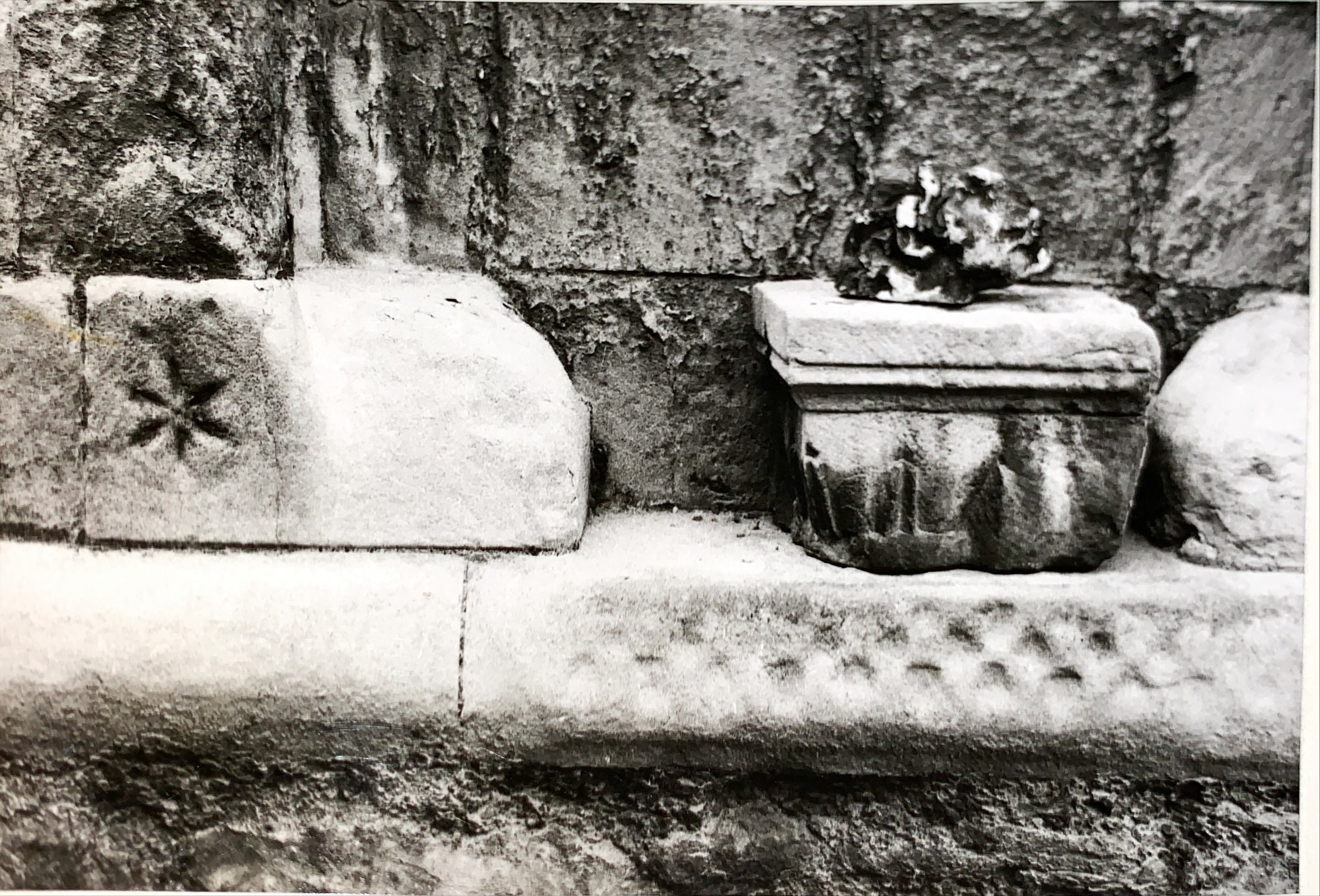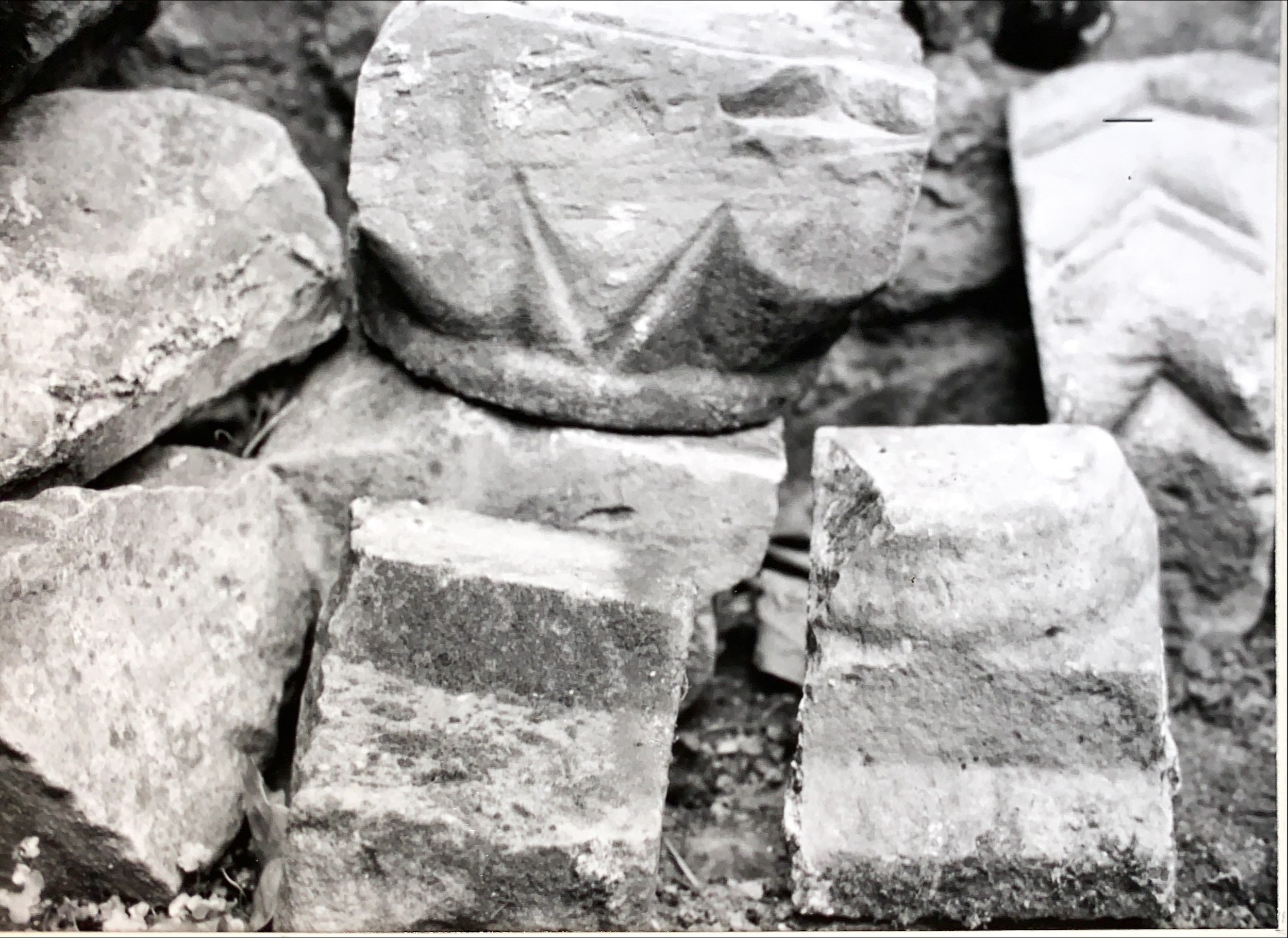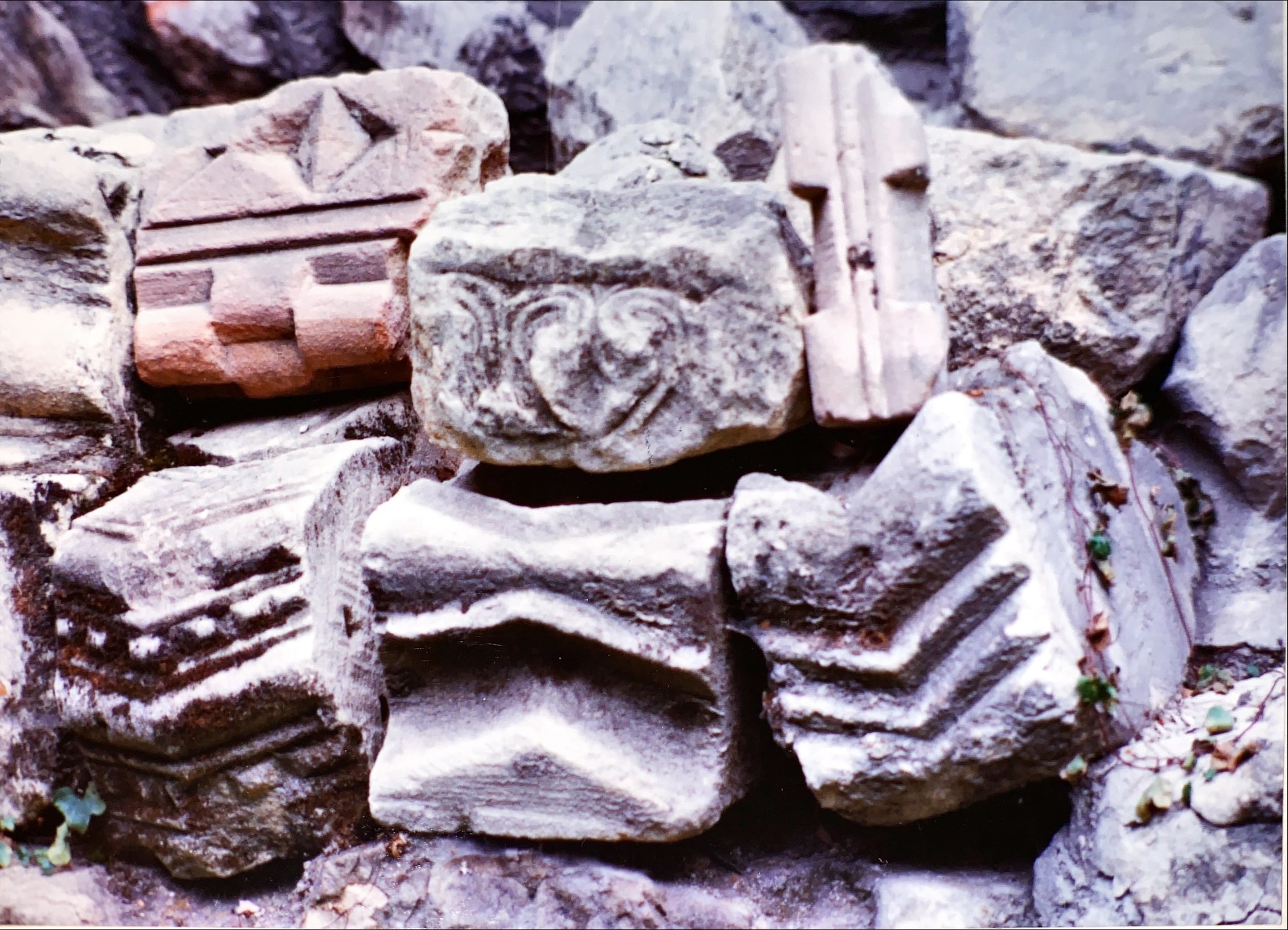Establishing the Lapidarium
/Anneliese Arnold writes of the project to move and catalogue the majority of the sculptural fragments scattered around the cloisters and crypt in the early 1990s. Featured in The Friends of Rochester Cathedral Annual Report for 1990-1991.
One day in 1980 I was walking towards the South Door of the Cathedral (before the porch was built) when I noticed a carved stone of the Norman period with a beautiful lattice pattern lying exposed in a flower bed where the soil had been washed away by torrential rain. It was too good to leave to the mercy of the elements, so I picked it up and took it home to save it from harm.
It was then that I remembered a footnote in St. John Hope's, Architectural History (1) to the effect that his friend and assistant George Payne, FSA had gathered together and placed in the slype beneath the Chapter Room 'a large number of carved and moulded architectural fragments, some of considerable beauty and interest that have been found from time to time at successive "restorations".' Despite George Payne's efforts, the stones had since been scattered again, a few preserved elsewhere in the cathedral, but many simply piled up on a ledge inside the ruined Chapter House, exposed to the weather. Some of the best have disappeared, doubtless taken as souvenirs or ornaments.










Photos of the fragments in the Cathedral cloisters in the 1980s before the project to catalogue and house them in the Lapidarium.
The late Emil Godfrey, Surveyor to the Fabric, loved the Cathedral and its stones; and when I discussed, this with him in 1981, he was very enthusiastic about the possibility of establishing a lafidarium, or depository of carved and worked stones. I then had to persuade the Dean (not as easv as you might think); and he had to persuade the Chapter to make available the old Treasury above the North Quire Transept. One problem was that it was littered with rubbish and with the old music books which the Choir had used in the nineteenth and early twentieth centuries. Paul Hale rescued the books which were worth saving, catalogued them and placed them in the Music Library in Gundulf's Tower.
Two of our young people, Claire Walker and Leslie Hudson, helped to collect the stones and move them up to the Treasury; and the Cathedral Campers (in 1986) repaired and cleaned the walls and floor. Martin Care, our present Surveyor, was very supportive and he designed the shelving, which was erected by craftsmen from the Royal School of Military Engineering. This included transforming the previously unusable but historic cupboards which had originally housed Dr. Bray's Library into storage for the most important archaeological remains. It also affords a large flat working surface. The malerials were paid for by our American friend, Mrs. Mary Covert, who took and still takes a keen practical interest in the project. She has also taken most of the pictures for a photographic record.
Nearly one hundred years ago St. John Hope wrote of the stones which George Payne had gathered: 'They have yet to be sorted and labelled - and this remains true today. We need a competent person to produce a catalogue; and the Lapidarium will then be useful to students and scholars and to all who appreciate this part of our heritage.
Rochester is fortunate to possess some outstanding examples of carved and painted masonry, including three carved stones of the Anglo-Saxon period. One of these stones is on loan to the Guild Hall Museum, Rochester. Another is a rare example of a Ringerike stone with a unique Latin inscription. (2) A stone with the remains of an early twelfth century fresco was found in the vault of the Crypt during recent conservation work. The magnificently carved fragments found by Cottingham in the walled up tomb on the north side of the Presbytery, in 1825, are also kept in the Lapidarium. Doubtless they were hiciden there as an act of piety and for safe keeping at a time of destruction following the Reformation. They were carved to the glory of God by those of whom we can say 'their prayer is in their handiwork' (Ecclesiasticus, 38,34) and as such they deserve our interest and protection today.
Anneliese Arnold
Footnotes
1 W.H. St. John Hope, The Architectural History of the Cathedral Church and Monastery at Rochester. London 1900. p. 135+
2 Friends of Rochester Cathedral, Report for 1988/89. p. 10f.




